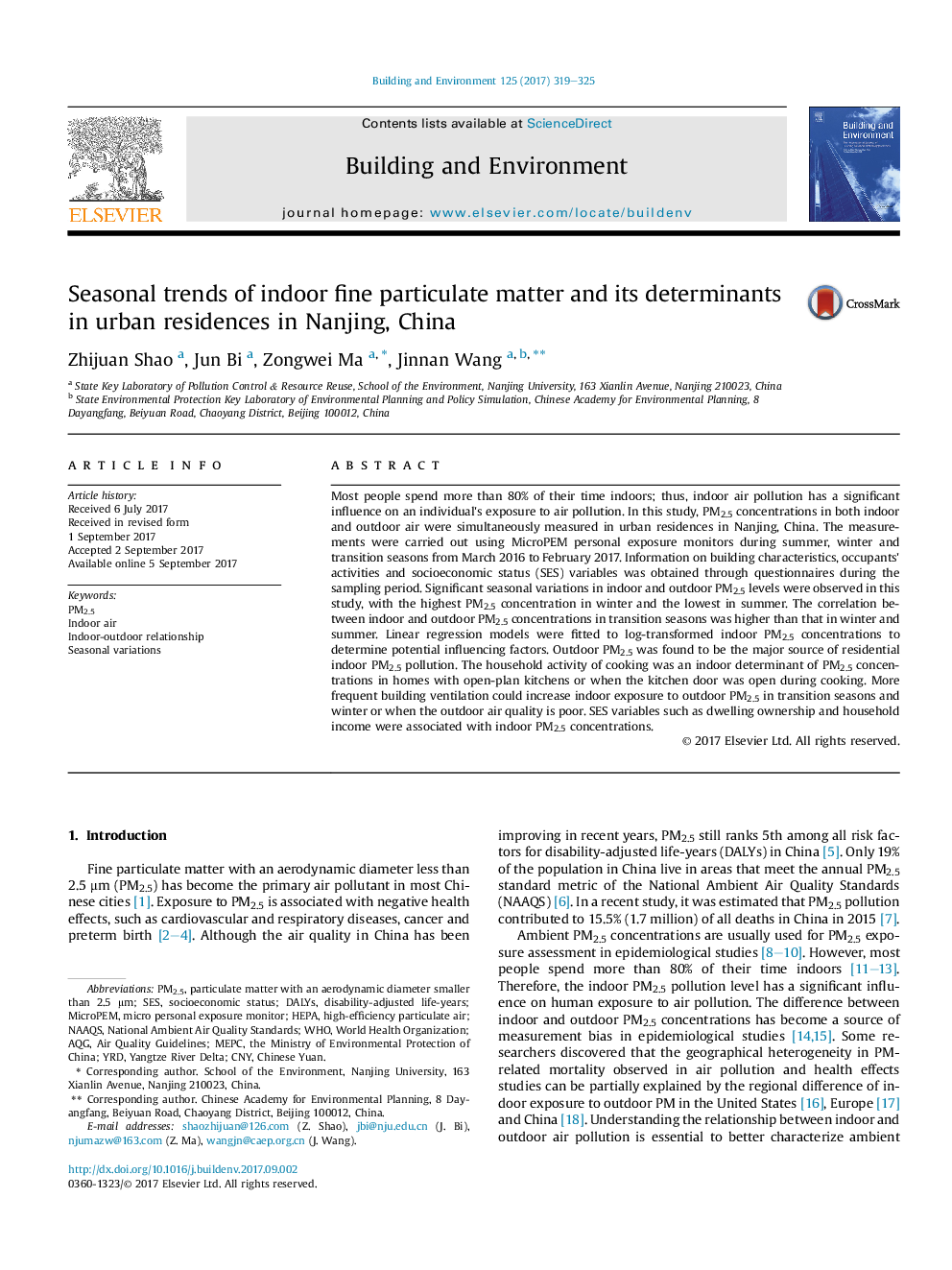| کد مقاله | کد نشریه | سال انتشار | مقاله انگلیسی | نسخه تمام متن |
|---|---|---|---|---|
| 6479233 | 1428367 | 2017 | 7 صفحه PDF | دانلود رایگان |
- Seasonal variations of indoor and outdoor PM2.5 concentrations were observed.
- The average I/O ratio of PM2.5 levels was lower than 1 except in summer.
- Outdoor PM2.5 was a significant predictor for indoor PM2.5 concentrations.
- Cooking was the main indoor source for higher indoor PM2.5 concentrations.
- Modify human behavior patterns indoors can help reduce indoor PM2.5 levels.
Most people spend more than 80% of their time indoors; thus, indoor air pollution has a significant influence on an individual's exposure to air pollution. In this study, PM2.5 concentrations in both indoor and outdoor air were simultaneously measured in urban residences in Nanjing, China. The measurements were carried out using MicroPEM personal exposure monitors during summer, winter and transition seasons from March 2016 to February 2017. Information on building characteristics, occupants' activities and socioeconomic status (SES) variables was obtained through questionnaires during the sampling period. Significant seasonal variations in indoor and outdoor PM2.5 levels were observed in this study, with the highest PM2.5 concentration in winter and the lowest in summer. The correlation between indoor and outdoor PM2.5 concentrations in transition seasons was higher than that in winter and summer. Linear regression models were fitted to log-transformed indoor PM2.5 concentrations to determine potential influencing factors. Outdoor PM2.5 was found to be the major source of residential indoor PM2.5 pollution. The household activity of cooking was an indoor determinant of PM2.5 concentrations in homes with open-plan kitchens or when the kitchen door was open during cooking. More frequent building ventilation could increase indoor exposure to outdoor PM2.5 in transition seasons and winter or when the outdoor air quality is poor. SES variables such as dwelling ownership and household income were associated with indoor PM2.5 concentrations.
Journal: Building and Environment - Volume 125, 15 November 2017, Pages 319-325
